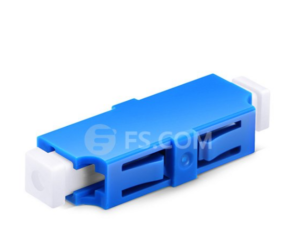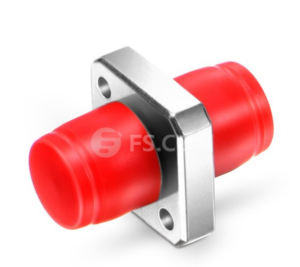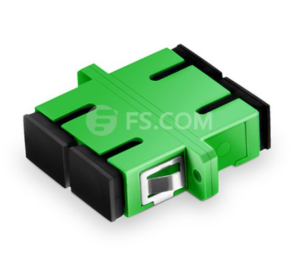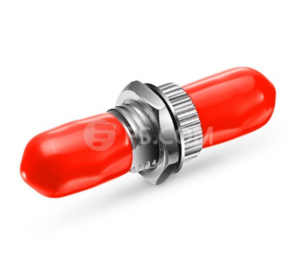What is Fiber Optic Adapter?
Fiber optic adapter (also called coupler) is designed to connect two same or different styles fiber optic connectors together precisely at the two ends, which ensures the output of light energy of transmitter coupled to optical receiver almost completely.
How to Classify Fiber Optic Adapters?
Fiber optic adapter can be divided into mating sleeves and hybrid adapters according to the diversity of the fiber optic connectors, mating sleeve means this fiber optic adapter is used to connect the same type fiber optic connectors (SC to SC, LC to LC, etc.), while hybrid adapters are the fiber optic adapter used to connect different kinds of fiber optic connectors (ST to SC, LC to SC, etc.). According to different structures of fiber optic adapter connectors, there are FC, SC, ST, LC, DIN, MU, MT, D4, MTGJ, E2000 and so on. According to different end shapes, there are APC, PC, UPC. According to different transmission medium, there are single mode and multimode adapters. And according to the number of fiber core, there are simplex and duplex. In practical application, we usually distinguish fiber optic adapter from different structures of adapter connectors.
Some Types of Fiber Optic Adapter
LC-LC Fiber Optic Adapter
FC-FC Fiber Optic Adapter
SC-SC Fiber Optic Adapter
ST-ST Fiber Optic Adapter
About PC, UPC, and APC in Fiber Optic Adapters
Usually we hear about descriptions like” LC/UPC multimode duplex fiber optic patch cord 3 meters”, or “FC/APC single mode fiber optic pigtails”,” ST/PC multimode duplex fiber optic jumper”, what do these words PC, UPC, APC mean? We know that PC, UPC, APC are standards of the fiber optic connectors, they are actually the polish style of fiber optic ferrules. Here is a picture.
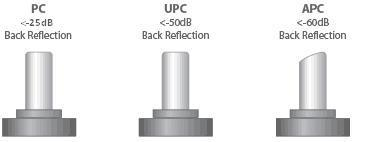
The different polish of the fiber optic connector ferrules result in different performance of them, mainly on the back reflection (return loss). Generally, PC type is required at least 40dB return loss or higher, UPC is 50dB or higher, APC is 60dB or higher. As we know, the higher the return loss the better the performance. Insertion loss of them all should be less than at least 0.3dB, the lower the insertion loss the better the performance. Single mode fiber optic cables can be with PC, UPC or APC polished connectors, while multimode there is no APC ones.
